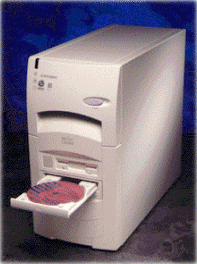
 |
|
 |
|
||||||||||||||||||||||||||||||||||||||||||||||||||||
 |
|
||||||||||||||||||||||||||
| Specification | |
| Bus Architecture | PCI / ISA |
| Processor | Intel Pentium 133, 166, 200MHz, Pentium Pro 200MHz processor |
| Video | Pentium - High performance 64-bit PCI with 2MB of video
RAM Pentium Pro - Matrox Millenium 64-bit PCI 2MB WRAM |
| Audio | SoundBlaster Vibra-16CL |
| Memory | Pentium - 16 - 256MB 32-bit EDO 60ns SIMM Pentium Pro - 16 - 192MB 72-bit EDO ECC DIMM |
| Floppy Disk Drive | 3.5" Internal |
| Hard Disk Drive | 2.1 to 3.2 GB E-IDE |
| Networking | 3C509B combo ISA card 3C905TX PCI card |
| Security | BIOS level security. Power On/CMOS Setup Password, FD Access, Virus Detection. Case locks and security loop. Pentium Models only - Electronic fingerprinting |
| Expansion Options | 6 Expansion Slots Dual USB ports DMI compliant |
![]()